Alex: I suppose if you come into historical gaming via Warhammer the idea of different armies having unique special rules wouldn’t raise an eyebrow, but when you stop and think about it, it is kind of odd. Humans are humans and Germans having the ability to do X while a Brit can do Y does, in a way, seem to buy into 19th/20th century ideas on racial characteristics.
Some World War II rulesets, such as Chain of Command, don’t use national rules at all – instead using equipment and organization to differentiate armies. In Bolt Action, however, a mortar is a mortar, and a tank is a tank. Equipment is largely interchangeable and all use the same rules. Platoons are also homogenized into a simplified commander and 2+ squad organization. With that as its base, I think Bolt Action does need special rules in order to differentiate the various combatants.
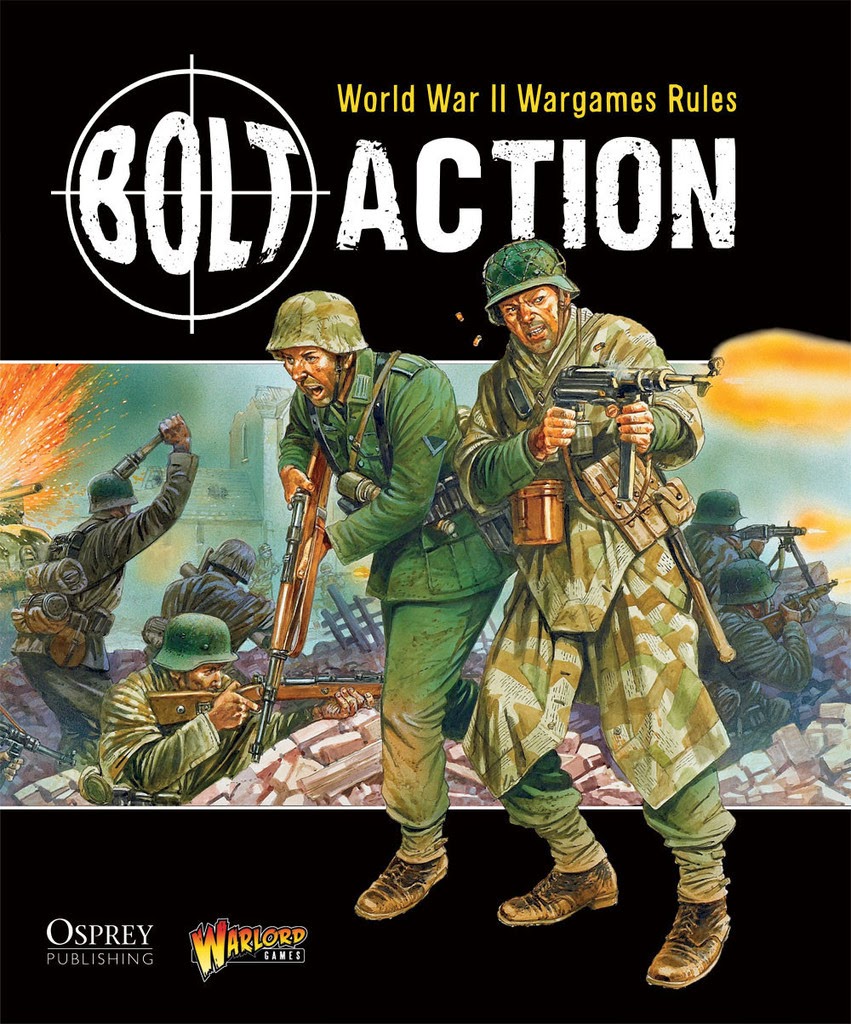
Ilor: That’s not entirely true for Chain of Command. There are “national characteristics,” but they generally have to do with the doctrine, training, and equipment of the forces in question. They’ll be things like American GIs being issued semi-automatic rifles, or British Bren guns being very accurate for a magazine-fed LMG and therefore being able to focus hits on a single target in certain circumstances. Similarly, platoon organization plays a “national characteristic” role as well, for instance with French platoons organizing their rifle-grenade armed troops into a special section within the platoon. This gives each force “flavor” that is organic without resorting to gimmicky special rules for each force or unit.
Dan: National rules play an interesting place in historical wargaming, because many people hop into historicals because they’re fans of a certain period – either they watch a movie, read a book or attend classes about a specific period or subject and want to build, paint and play with miniatures centered around that period. Many of those sources lean heavily into the “what made this faction this faction” type of explanations. From a gaming standpoint, it makes sense for Bolt Action to have faction specific rules to help players feel like they’re playing their faction a little more – Japanese players will want to do Banzai charges, German players will want to field Tanks, etc.
Michael O: I think it’s fine to have national rules – a lot of them are just based around what equipment the nation had more of, or certain doctrines that they really exemplified.
Alex: If a historical ruleset is going to use “national special rules” I think they need to serve two purposes – to differentiate factions from each other, and make the player excited/interested in playing a faction. Philosophically I’m opposed, in general, to special rules that are just penalties or maluses for a particular faction. I think it betrays a lack of creativity and frankly, can sometimes be downright insulting.
Michael O: I agree with the above. Nobody wants to buy and lovingly paint a bunch of minis and vehicles so they can be penalized with a negative rule for their faction. In addition, I don’t think the rules should only be universal special rules granted to the faction – they should be more creative and fun.
Ilor: Agreed. Some forces did have crap equipment or suffer from high-level command or logistical issues (Italy springs immediately to mind here), but at the pointy end, a man with a rifle is a man with a rifle. There were many actions where the Italians were hard as nails on a tactical level, which is what the tabletop represents. If we’re going to penalize an Italian platoon for the ineptitude of Commando Supremo, we should also make German players roll dice for “out of fuel, so sorry” every time they want to field a Tiger tank.
Grading Bolt Action’s Army Special Rules
We’ve graded the Bolt Action Army Special Rules using a standard American grading scale, from A to F. We are judging the rules on following criteria:
- Are they fun?
- Do they work mechanically?
- Are they historically accurate?
For this article we will only be reviewing armies that appear in the Armies of books, not rules or armies that appear in Campaign books or expansions. The armies have been arranged from worst to best grades.
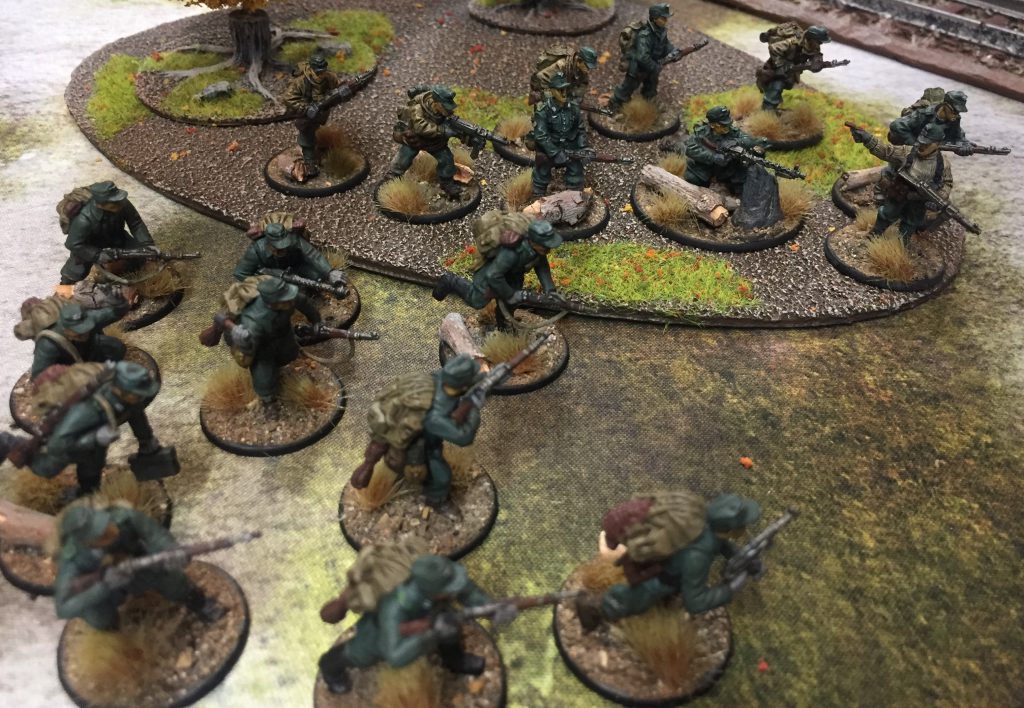
Italy
Overall Grade: F
Alex: The Italian army has two special rules in Bolt Action: “Avanti Savoia!” and “Defensive Strategy”. For me, these rules commit the cardinal sin of being both mechanically unfun and shifting the strategic and logistical failures of the Italian army onto the average Italian infantryman.
“Defensive Strategy” on its surface, appears fairly decent, providing several bonuses for the Italian army when defending. The issue, of course, is that the special rule only activates during scenarios when the Italian army is defending. If the Italians are attacking, or the scenario has no designated defender (like every tournament game) then this rule does absolutely nothing!
“Avanti Savoia” on the other hand, is one of the most debated rules in Bolt Action. The rule gives Italians a variable morale based on if they’ve destroyed more enemy units than they’ve lost. I’m not necessarily against force morale as a mechanic, but implementing it for only a single faction is pretty unfair. Apparently the Italians are the only people who feel encouraged when winning a battle and discouraged when they’re losing? Mechanically, this rule buffs the player who is currently winning and penalizes the player who is already losing, just accelerating the process and leading to unsatisfying results. Grade: F
Ilor: I know this is not a Chain of Command article, but hilariously one of the national characteristics for the Italians is also called “Avanti Savoia.” But in that game, it’s about chucking grenades at your foes and stabbing them with bayonets. Much better, in my opinion, and an example of a special rule that is characterful and not punitive.
Dan: I am not at all a fan of punitive rule sets. It can be argued that every army at some point during the war had setbacks, blunders, and logistical challenges. Setting up rules that feel bad are not a good way to write rules. Players want to have a fun time playing the game. With Italy, the bad parts are all compounded, especially with Avanti Savoia. I think one of the things that makes Bolt Action one of the best miniatures games on the market today is how much things can swing, even down to the last round. Avanti Savoia tips those scales to make a losing player lose even harder, which sucks any enjoyment out of the game. Grade: F
Michael O: Yeah, unfortunately the special rule predicated on being defender is tough because tournament gamers loathe attack/defend scenarios and so they aren’t used so much Honestly, I’m not entirely well versed on the Italian army’s history so it’s hard or me to make suggestions, but it needs to be re-done and WLG has had plenty of opportunities to do so. Grade: F
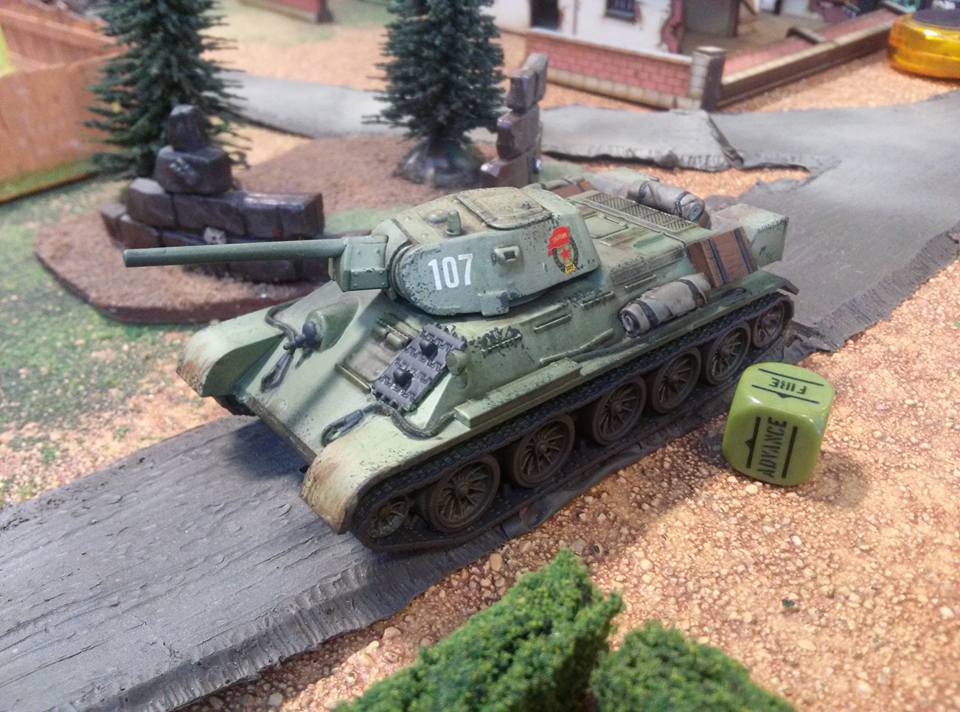
Hungary
Overall Grade: D-
Alex: Poor Hungary, only gets two special rules. First, they get “Axis Support”, which allows them to field a German or Italian unit which can be a fun way to mix things up and allows them to break platoon unit maximums (by fielding a second tank, for example). Their second rule, “Experienced Officer Corps” is practically useless. It gives officer units the Fanatics rule, but Fanatics only works when there are two or more men in a unit, and Officer units max out at three men, which means they’re likely to lose the rule quickly. Even if this wasn’t the case, using officer units aggressively is not a good idea, so even getting any mileage out of a Fanatic officer would be difficult. There are so many interesting places they could have taken Hungarian special rules, it’s a real shame this is what we end up with. Grade: D
Michael O: It’s a big bummer because anybody who plays BA after three or so games realizes they don’t ever want to take an officer unit above two dudes, because if they’re three then they don’t get the -1 to hit from ‘Small Team’. So you just get destroyed in one round of shooting. Grade: D
Dan: To me, Hungary gets an F. Being able to field another unit is fine, but not being able to benefit from their special rules is a bummer, and like stated above, Experienced Officer Corps is useless. A better use would be letting units reroll order checks or something of that sort. Boring and bad. Grade: F
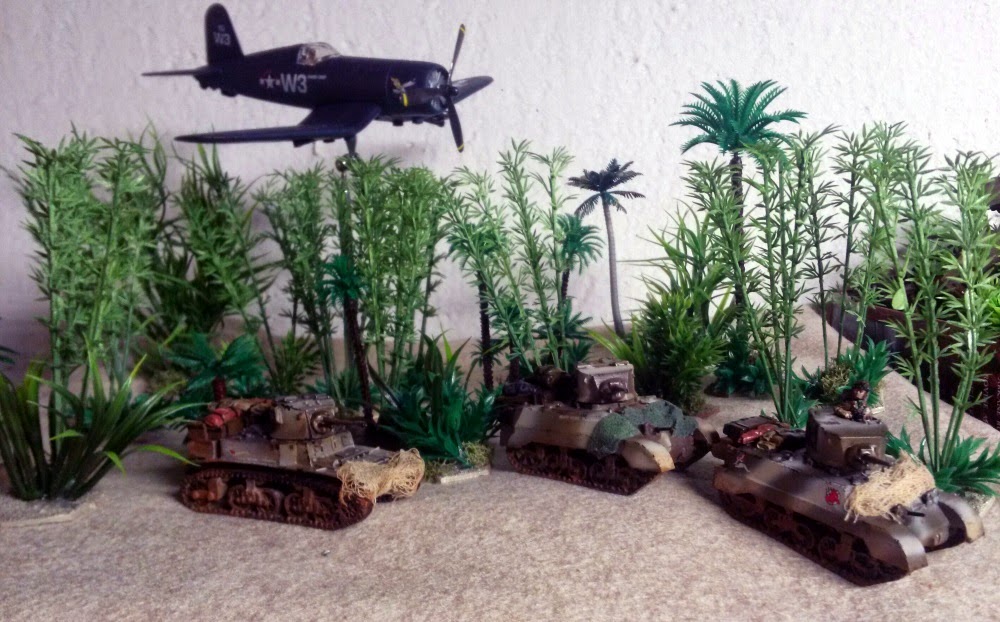
Poland
Overall Grade: D
Alex: The Polish special rules don’t feel “Polish” enough. They have “Communications Breakdown” like practically every other minor Allied power alongside “Elite Officer Class” which gives officer units Fanatics. As discussed in the Hungary section, this pairing doesn’t really work mechanically and essentially means two out of three of Poland’s special rules are wasted. Their last rule “No Hope of Retreat” works thematically, allowing Polish units to re-roll morale before surrendering. I wish they had more like this. It also falls into the trap of several armies on this list of only focusing on Early-War. Polish troops continued to fight on in exile, but this isn’t represented at all in the rules. Grade: D
Michael O: I agree, it would be great to see their rules reflect more of the entire war than just the beginning. The Polish have some really cool units like their tiny tanks and partisan stuff later on, we need to see it on the tabletop. Grade: D
Dan: I really don’t know why so many of the rules focus on a specific period in the war and apply it across the entire thing. Since only 1 rule really works, I agree. Grade: D
Bulgaria
Overall Grade: D+
Alex: Bulgaria is part of the Only Got Two Special Rules For Some Reason Club. And they’re…not great. The bafflingly named “Axis Allies” allows Bulgarians to field a German or Italian unit in their list, which I guess is fun for variety.
“Counter-Partisan Experts”, meanwhile, prevents the opposing player from outflanking or setting up snipers and spotters outside of their regular deployment zone. This rule essentially applies a nerf to an opponent’s army rather than any kind of bonus to the Bulgarians themselves, which I don’t agree with from a game design perspective and doesn’t sound fun for either player. I wouldn’t know from first-hand experience however, since absolutely no one plays Bulgarians. Grade: D-
Michael O: Personally I don’t mind the Axis Allies rule – although to be honest it seems like with a bit of historical research they could have just figured out which tanks helped out the Bulgarians and put them in the army list.
I totally get the dislike of nerfing the opponent’s army, but I get where WLG was coming from here. After the initial push into Russia the Germans relegated many of the minor powers to back line security duty. I don’t feel that it’s too bad in nerfing the enemy – I don’t feel that too many people entirely predicate their entire strategy on outflank or setting up observers or snipers in specific spots. I think it’s a decent defensive boost for the Bulgarians. Grade: C+
Dan: They recently added more rules for creating mixed nation forces in the Italy: Soft Underbelly book which is fun, and I like having the option for Bulgaria. I completely agree about the Counter-Partisan Experts rule being unfun for both players, especially if you’re playing as an opponent of Bulgaria. To be fair, having your artillery piece blown up at the top of turn 1 by a sniper is also very unfun, but this is doubly unfun.
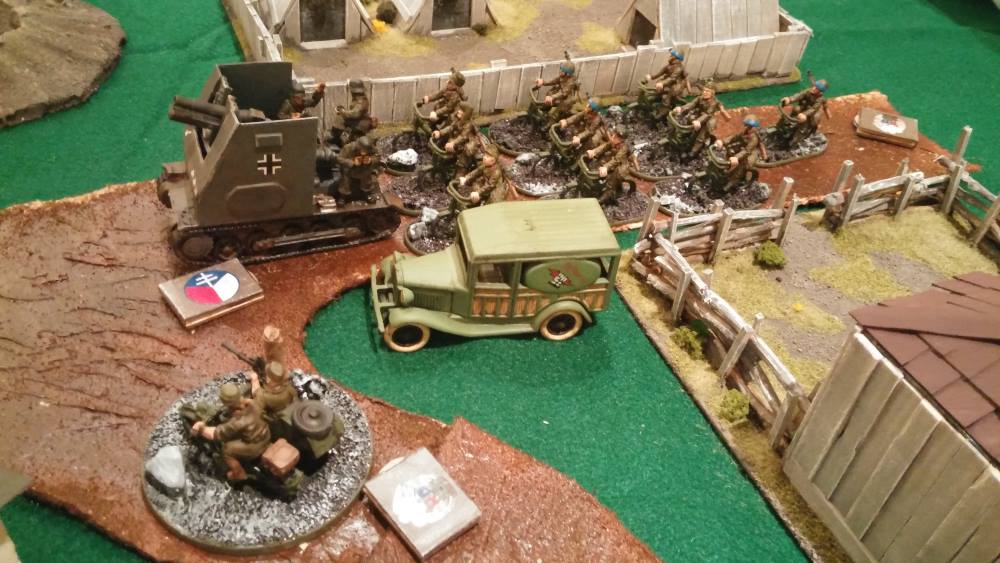
Slovak bicyclists ride behind their German allied artillery. Credit: Michael O
Belgium
Overall Grade: C+
Alex: Belgium, the Netherlands, and France all have the exact same special rules? Really? There wasn’t anything unique to set them apart from each other? Yawn. Grade: C
Michael O: I really don’t know much about the doctrine and equipment of these countries during the war – so I’ll bow to Alex’s intellect. Grade: C
Dan: Not much point in including national rules if they’re going to be the same for multiple armies. They’re good rules in my opinion, although Belgium and the Netherlands cannot take VB Launchers, so it makes Hurriedly Conscripted Reserves a little less useful. B grade for me because of it. Grade: B
Netherlands
Grade: C+
Alex: After seeing the same rules for the third time I’m starting to get real “oh shit, this book is due tomorrow?!” vibes. Grade: C
Michael O: Having cool as hell helmets is a special rule in itself. Grade: B
Ilor: The Netherlands is a tough one, because they were in the war as a sovereign nation for all of 6 days. It’s hard to say what might distinguish them on the field because there was precious little doctrine to be put to the test.
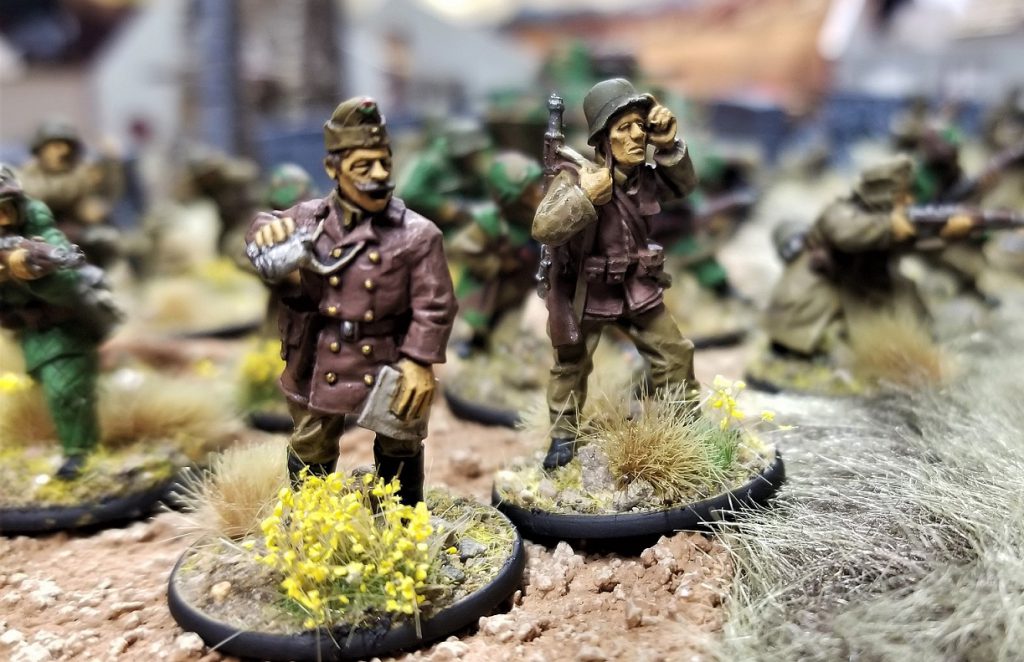
Partisans
Overall Grade: C+
Alex: Look, the Partisan rules aren’t bad, but they’re just such a missed opportunity. Partisans are an asymmetrical force and here was a chance to make an army that breaks all the rules and plays completely differently. Instead they get “Fieldcraft” and “Infiltration” like Greece and Norway, which admittedly make sense but aren’t exactly ground-breaking. Their only real unique mechanic is “Hidden Bomb” where the Partisan player gets to hide booby-trap somewhere on the map. This is neat, but could have been paired with some other new mechanics to make something really interesting. Making the partisans deploy on the field like any other force is both ahistorical and boring. Why aren’t partisans deploying with unique mechanics, like appearing out of terrain pieces? Instead, partisans are mostly just a badly-trained force fighting symmetrically. What a waste! Grade: B-
Michael O: I think they’re a missed opportunity as well. It’d be interesting to see partisans have a jump-off point mechanic like in Chain of Command – where they might pop out of a building or a secluded forest and hit hard and fast. The bombs are good board control stuff, but unless they’re near an objective I think most enemies will avoid them since they know where they are. It’s interesting that they can be placed right next to each other, making a single corridor or objective trigger multiple times for an enemy unit.
I think personally I’d take a page out of the 40k book and make the platoon officer have a special attack that targets an enemy unit, maybe three times a game or something? It’s inaccurate but if it hits then it does pretty good damage. It’s abstract, representing him or her calling in a panzerfaust team from a ditch or the enemy running over a mine. Grade: C
Dan: I think Partisans would be great as a strictly historical battle force. Part of the problem is that you can’t make game breaking mechanics, like having them pop out of terrain, and have them be usable in tournament play. You need some sort of standardization. I think you probably could make it a little more balanced if they partisans would melt away after withering fire or something. I agree that they’re not bad, I’m just not sure how you would rework them.
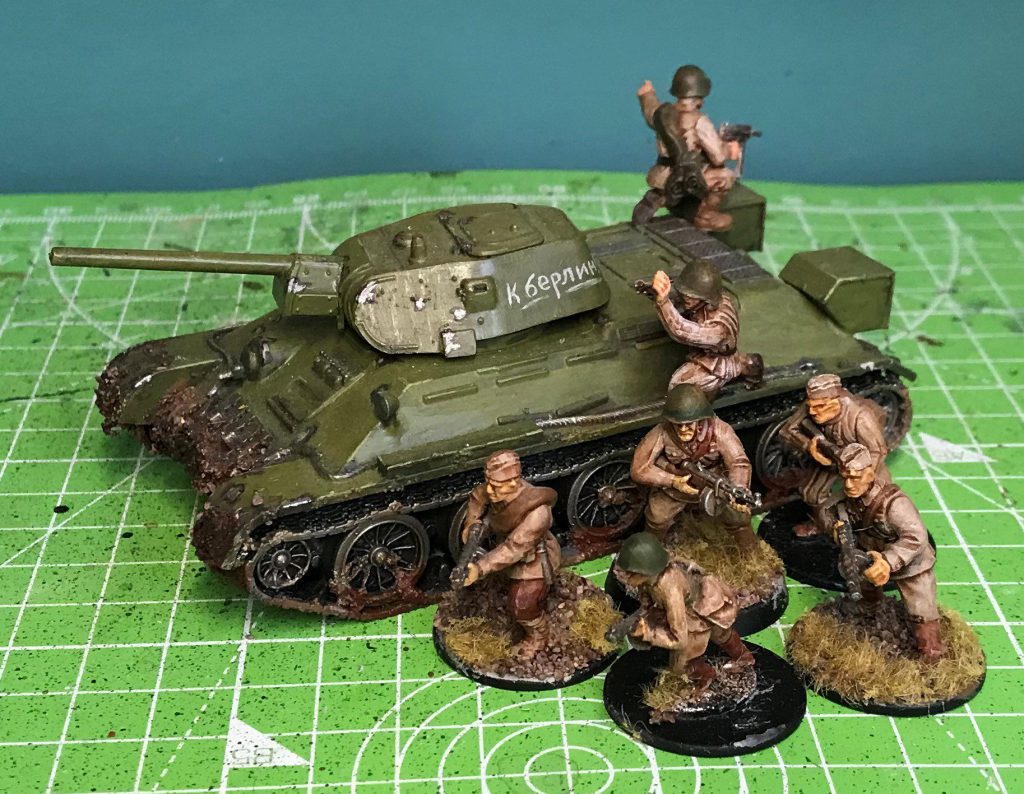
Soviet tank riders and infantry with a T34. Credit: lenoon
Romania
Overall Grade: C+
Alex: Romania is in a weird place because their rules aren’t unfun, they’re just wildly ahistorical. Romania gets “Axis Support” like Hungary, allowing them to take a German or Italian unit outside of the normal platoon restrictions. On top of that they get “French Artillery Doctrine” which gives them a second free artillery unit. The end result is that Romania, a country that struggled to equip their forces with much beyond basic infantry equipment, can end up with an absurd amount of firepower – such as three artillery pieces, or two artillery pieces and two tanks. Romania players love this ability, although historically it is extremely bizarre for Romania to be outgunning most of their opponents. Grade: C
Michael O: I think, to be honest, the Axis Support rule works best when you include a tank from Germany that you know Romania had – like the Panzer IV, Stug, etc. that aren’t included in the army list but are in the Theater Selector. Many tournaments won’t allow theater selectors, so this makes up for that. I honestly have never thought about using German or Italian infantry as the ally, just vehicles.
I score it a B just because having free artillery is pretty amazing. While it may be ahistorical, it might be fun. Grade: B
Dan: Getting free artillery rules, especially since it doesn’t count toward your normal limit of artillery. C for me – one good rule, one okay boring rule. Grade: C

Churchill tank. Credit: Mike Bettle-Shaffer
Norway
Overall Grade: B-
Alex: Norway gets the exact same special rules as Greece, which is a little odd on the surface. On the other hand, both armies were adept at fighting in cold mountainous conditions and both nations engaged in partisan resistance against the Axis. However, I just feel like these national rules fit the Greeks a little better than the Norwegians. Grade: C+
Michael O: It’s weird to me that they have the same rules as Greece. They’re good rules overall, in my opinion. Outflanking will always be useful and doing it better is powerful, and being able to Ambush on the first turn is nice, especially with useful stuff like snipers or anti-tank. Grade: B
Dan: The rules are good, but having national rules doesn’t really mean much if your rules are the same as another nation (that operates in a completely different environment). Grade: B-
USSR
Overall Grade: B-
Alex: The Soviet rules are a real mixed bag. On one hand, you have “Massed Batteries” and “The Great Patriotic War”, which gives bonuses to artillery and morale, respectively. These are fine. But then you get into the “Quantity Has A Quality All Of Its Own” rule, a statement often attributed to Stalin. This is followed with the unattributed quote that, “if you have more men than they have bullets, they will eventually run out of ammunition”. As far as I can tell, this quote was invented out of whole cloth for this book, and has no historical basis whatsoever.
The result is to give credence to the “Asiatic horde” narrative that found a surge in popularity as World War II ended and the Cold War began. This, of course, was a popular refrain of Wehrmacht generals in their post-war memoirs and have unfortunately made their way into popular history. It is sad to see it repeated again here.
Then, of course, you have the ubiquitous commissars shooting their own troops rule that seems to pop up in every WWII game. Aside from badly misunderstanding the role of commissars in the Red Army, it again plays into post-war narratives designed to dehumanize “the Reds”. Grade: C-
Michael O: I think the “Massed Batteries” and “Great Patriotic War” rules do work mechanically. We do know that early on in the war, the NKVD did press into service a ton of civilian militias – but I’d keep those to specific theater selectors, not necessarily a free unit for every game.
I’d get rid of the commissar rule if I was in charge, but to be honest you can just avoid it by not using a commissar. Grade: B
Ilor: The Soviet army is tough, because in the early days of the war Stalin’s purges of the politically impure in the various branches of the armed forces during the interwar years led to a woefully inept and inexperienced officer corps. Desperate wave attacks by Soviet troops were well documented in the Winter War against the Finns, for instance, as inexperienced field commanders under tremendous political pressure tried to overcome the limitations imposed on them by terrible logistics and awful environmental conditions.
But the Red Army of 1940 is a very different beast to the Red Army of 1943 and later. By that point the Soviets had their shit dialed in and were arguably the most efficient and effective fighting force on the planet. Any national characteristic that leans into massed hordes of inexperienced troops (especially later in the war) commits the cardinal sin of historical games – it is historically inaccurate. Pitch it, says I.
Dan: The Red Army gets an A from me specifically because of Massed Batteries. I absolutely hate the Quantity has a Quality All of it’s Own rule because it plays into a narrative that detracts from the real history of the Red Army. Like Ilor said above, they had their shit dialed in and were one of the best forces on the planet. I think like many other armies, they would benefit from having a range of choices depending on the year. Grade: B
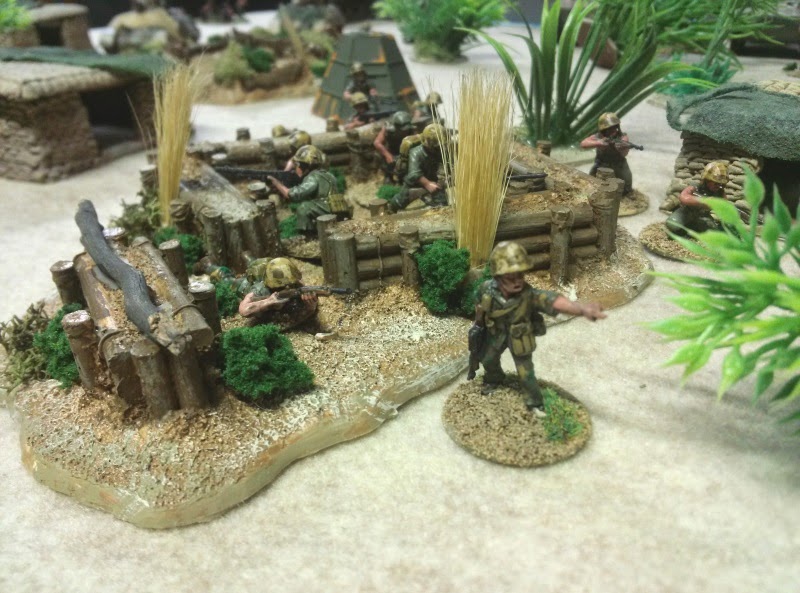
Greece
Overall Grade: B
Alex: I’m starting a Greek army so I’ve been pondering their special rules a bit lately. My conclusion is that they’re…ok. “Communication Breakdown” remains boring and might as well be ignored, as it has so little impact on the average game. “Fieldcraft”, however, allows Greek units to begin in ambush and ignore rough ground for the first turn on the game, which is pretty handy and fits the Greek aptitude for navigating difficult terrain. Infiltration also allows Greek troops to ignore the -1 to come in from reserve which gives them another bonus to maneuverability. I wish the rules addressed the ferocity of Greek partisans as well as the reportedly terrifyingly effective Greek bayonet charge. Overall, it could be better, but certainly could be worse. Grade: B-
Michael O: I think, similar to what I said for Norway, they’re good rules and effective in the game. Grade: B
Ilor: I love rules that alter expectations about a unit’s mobility, and I think that even slight changes like these can make for some interesting effects on the board.
Dan: I agree that Communication Breakdown is boring and mostly useless, so it doesn’t get a negative mark from me. But Fieldcraft is amazing and will make for fun play. Grade: B
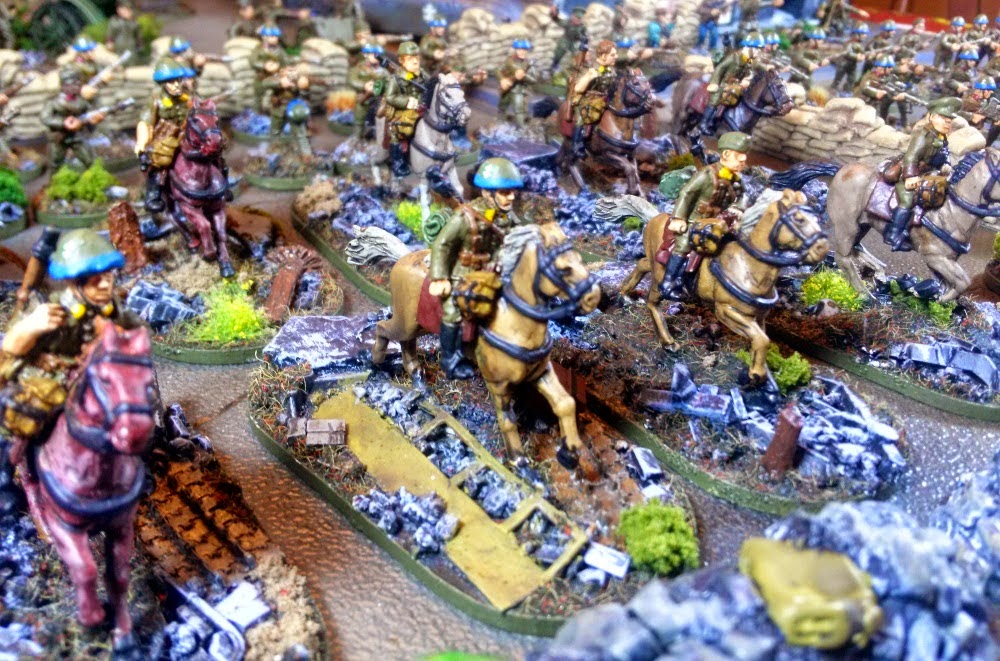
France
Overall Grade: B
Dan: I have a very large French army themed around the Invasion of France in 1940. The early war is much more interesting to me than the late war years – I love the weird little interwar tanks and the use of cavalry. France has three national rules:
Communication Breakdown, in which during the first turn of the game if the first order dice pulled is a French one, your opponent may put it back into the bag and have a new order dice be drawn. I like this rule because it’s thematic and it isn’t terribly punitive. There are numerous accounts from the Battle of France where French tanks were very much able to go toe-to-toe with the German Panzers, especially the Char B1’s. The issue is that communication breakdowns led to tanks not being able to coordinate with one another nor with infantry support on a wider scale, whereas the Germans could. It’s a thematic rule that doesn’t have a lasting impact on the entire game.
Forward Artillery Doctrine, in which French armies get a free Inexperienced or Regular artillery unit, including AT guns or a field artillery piece, excluding heavy artillery. I love this rule and I take advantage of it in every list. The First World War was famous for its gigantic artillery duels and the French maintained those artillery pieces during the interwar years. This rule is awesome thematically and fun to play. Probably not so fun for my friend Shane, who lost an entire unit of Soviet Infantry that he had run out into open ground, but fun for me, so A+.
Hurriedly Conscripted Reserves, in which French armies get a free Inexperienced Infantry if they’ve already taken three or more Inexperienced Infantry squads. To me, this is the blandest of the French army rules but I don’t dislike it. The main reason I find it good is because Inexperienced squads also benefit from the Green rule, where they can become regular after taking their first casualty. The French get a bad rap for the Battle of France and the focus is usually diverted to the British and the evacuation at Dunkirk, but as many historians note – the only reason there was an evacuation at Dunkirk was because French forces stayed behind and fought like lions to keep the Germans at bay. So, I have no problem with this rule. Grade: A
Alex: My issue with the French national rules is that they are not French enough! France is a country unlike anyone else, but here they have to share their national rules with several other countries. The rules also ignore France post-1940. Where are national rules for Vichy French, or De Gualle’s Free French? Grade: C
Michael O: I really don’t see many players choosing to bring three Inexperienced squads unless it’s for a historical scenario or funsies. It seems like wasted space, to be honest. Inexperienced squads are very difficult to use effectively and almost never worth their points. Free artillery is perfect, though. Grade: B
Dan: Ah, but France is also one of the only nations that has access to rifle grenades. The VB launcher counts as a light mortar and squads can take them for 20 points. Taking three inexperienced squads doesn’t seem like a good idea but adding in a light mortar to each one for 20 points really helps get some mileage out of them. All it takes is a six!
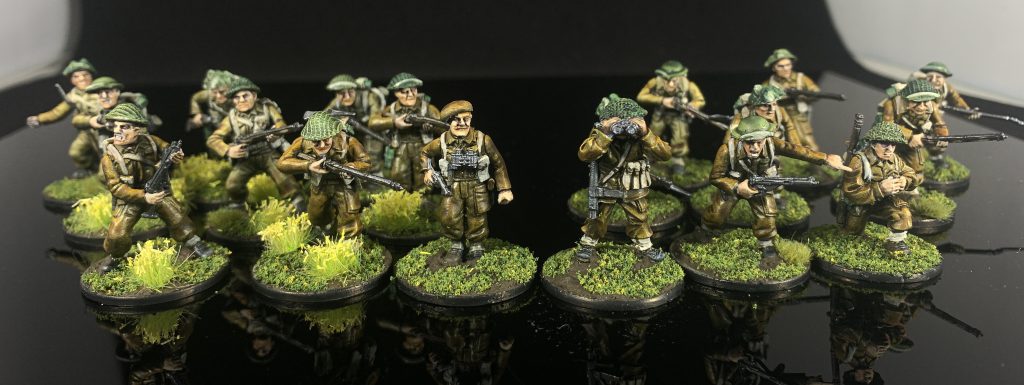
Germany
Overall Grade: B+
Alex: The German national rules are interesting in that many of them stem from high-level German army doctrine, but because they were so strongly infused into the German military, actually make sense at a platoon level as well. A good example of this are the German “Blitzkrieg” and “Initiative Training” rules, which represent the training officers and NCOs had to take their own initiative and act decisively. Next you have “Hitler’s Buzzsaw” which allows German machine guns to get an extra attack. Mechanically, this is a bit overpowered because of how effective tank-mounted MGs are, but thematically I don’t have a problem with this rule.
Then you come to “Tiger Fear”, the most contentious of the German special rules. Before an FAQ ruling, Tiger Fear caused ALL enemy units on the table with line-of-sight to a unit with the Tiger Fear special rule to have reduced morale. Due to public outcry, this was nerfed to only units within 18”, which caused a new round of gnashing of teeth at how useless the rule had become. As of now, I think most German players just ignore this special rule entirely as it’s not worth the hassle. I’ve certainly never seen it come up in-game since the nerf. Grade: B
Michael O: “Blitzkrieg” is super useful for doing better alpha strikes with a platoon leader and some units – I like it a lot. “Initiative Training” almost assures that you’ll never lose your NCO so your squads operate more effectively. “Buzzsaw” is really nice as mentioned above for tanks, especially tanks with more than one MG.
German tanks with Schürzen (side skirts) also deny the +1 side armor bonus to enemy man-packed AT weapons (bazookas, PIATs, anti-tank rifles, etc.). This is pretty cool and does come into play when enemies outflank your tanks.
Only the very expensive tanks get Tiger Fear – the Panzer IV (Ausf G, H, J), Panthers, Tigers, Jagdpanther, Jagdtiger, and Ferdinand / Elefant, Sturmtiger. The PZIV comes in at 235 pts regular, so to me it’s not a huge issue. I’m used to bringing an LT 38 tank (PZ 38t) so to me 235 pts for a tank is nuts. Grade: A-
Dan: I mean, it’s Germany. Probably the most popular army for Bolt Action. Their rules are fun and thematic – I especially love Initiative Training because it really helps the Germans play as they fought. The only real rule I have an issue with is Tiger Fear, which as discussed above is not that big of an issue. Ideally, rules would run the gamut of the war from start to finish, in which Tiger Fear would morph into Tigers being afraid to move anywhere since the US achieved complete air superiority and would simply skip rounds on the ground under the Tiger to mince the poor lads inside. But we couldn’t have Ze Germans having punitive rules now, could we? Grade: B
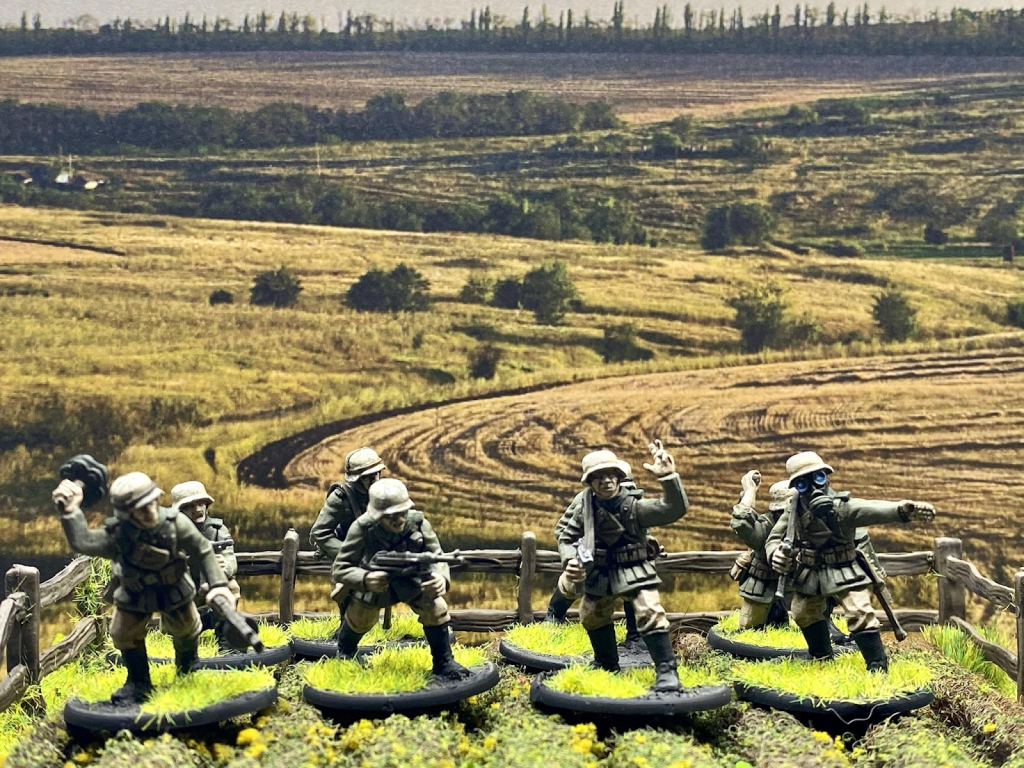
United Kingdom
Overall Grade: A-
Alex: The British special army rules are pretty good. They get “Bombardment” which, as the name suggests, increases the effectiveness of artillery bombardment. This synergizes well with “Artillery Support” which gives them a free forward artillery observer. I think this special rule is way more powerful than most give it credit for. First, it gives you a free unit, so that’s an extra Order Dice in the bag. Second, it gives you a powerful artillery barrage. Third, you can buy another artillery observer and have ANOTHER powerful barrage. I think this certainly incentives British players to focus on their artillery, which seems accurate enough.
For their last special rule the British player can select from an array of five different rules, each of which buff various aspects of their army such as shooting, charging, close combat, and passing order checks. This gives the British a lot of flexibility to create a force suited for the task-at-hand. Whether or not the Buffet Table special rule (that’s what I’m calling it now) is historically accurate is a little less clear. This last rule is supposed to function as something of a catch-all for the various Commonwealth forces: from Indians to Australians. I think a better approach would have been to give each Commonwealth nation their own set of special rules rather than the Buffet Table approach. Grade: A-
Michael O: I’ll be honest, the free artillery observer + roll two dice for the artillery barrage and choose one makes it very powerful. You are going to have a lot lower chance of hurting yourself and actually hitting the enemy, for free.
The Buffet Table of options is great – they’re all extremely useful except maybe the last one. It’s kinda reflective of BA being a British game, that they get all these rules. I like how the special rule is literally called ‘A National Characteristic’, lol. “Up and At Em” used to be a lot more powerful in 1st Edition BA, as you’d clear all pins when you managed to Assault – so you could take a pinned to hell unit and give it zero, and maybe destroy an enemy unit. Grade: A-
Dan: I think where the US Army Book excels at giving a plethora of rules to a huge national force, the British book does the same. I think the “Choose Your Fighter!” style of national traits is a great one because it really emphasizes the size, diversity and differences of the British army during the Second World War. Being able to pick a characteristic that meshes well with the theater & force your building is a great idea. Lots of other national books would do well to include this – maybe even France, since like Alex said above, France ranges from 1940 to 1945 and the national rules only really represent the Invasion of France. Grade: A
Finland
Overall Grade: A
Alex: Finland, undoubtedly has the best special rules of the various Axis minor powers. “Sisu” upgrades their infantry to a higher experience level when they have taken 50% casualties, even boosting veteran troops morale to 11, which no other unit in the game can achieve. I’m a big fan of special rules that “break” the basic gameplay rules and this is an example of one that is both fun and mechanically powerful.
Finland also gets “Trained Huntsman” which buffs their Ambush orders, and “Motti” which allows them to come in from reserve easier. While not a special army rule, Finland also has a unit that can move and then set up into Ambush, again breaking an established Bolt Action convention. The end result is that Finnish infantry are hard-as-nails, which fits Finland perfectly. Grade: A
Michael O: Agree on everything above. I haven’t faced a Finnish army in a long time, but when I did they were pretty scary. Grade: A
Dan: One of the guys in our gaming group plays Finland and they are a nightmare to play against, so they’re well deserving of that A grade. Their rules are both fun and reflect the historical record, so an easy A from me. Grade: A
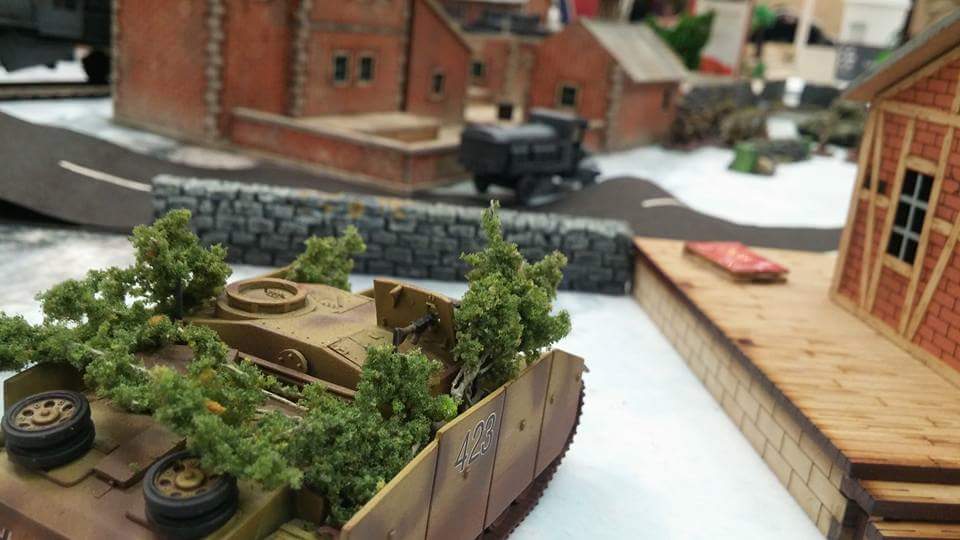
USA
Overall Grade: A
Alex: For the most part, I find the American special rules to be pretty solid. They get additional air strikes, their troops arrive from reserve easier, and their veteran tanks can get gyro-stabilizers. These do a decent job representing the economic and logistical advantages that the US Army had. The real gem of the US rules is “Fire and Maneuver” which allows US troops armed with rifles and BARs to move and shoot without penalty. This twists one of the fundamental rules of the games and gives the US a uniquely powerful tool, while encouraging an aggressive style of gameplay based on maneuvering in close to use firepower to full effect. Grade: A
Michael O: “Fire and Maneuver” is the best national special rule in the game, IMO. Being able to move and ignore the -1 penalty to hit, especially with oodles of BARs in USMC lists (a mid-war USMC unit can have thirteen dudes, 3 of which can have a BAR) is huge. Gyro-stabilizers also allow Veteran tanks to move around and blow people away without that critical -1 to hit. It’s just immensely powerful.
Calling in two airstrikes can be great but also can be very grim if you hit your own guys. Grade: A
Dan: I’m not adding in anything here that you two haven’t already other than the fact that I love the American rules. They really have a unique feeling and they’re very fun to play. Plus, with the wide range of army lists available (US Army, US Airborne, US Ranger, USMC) you really get a bang for your buck with the Americans. Grade: A
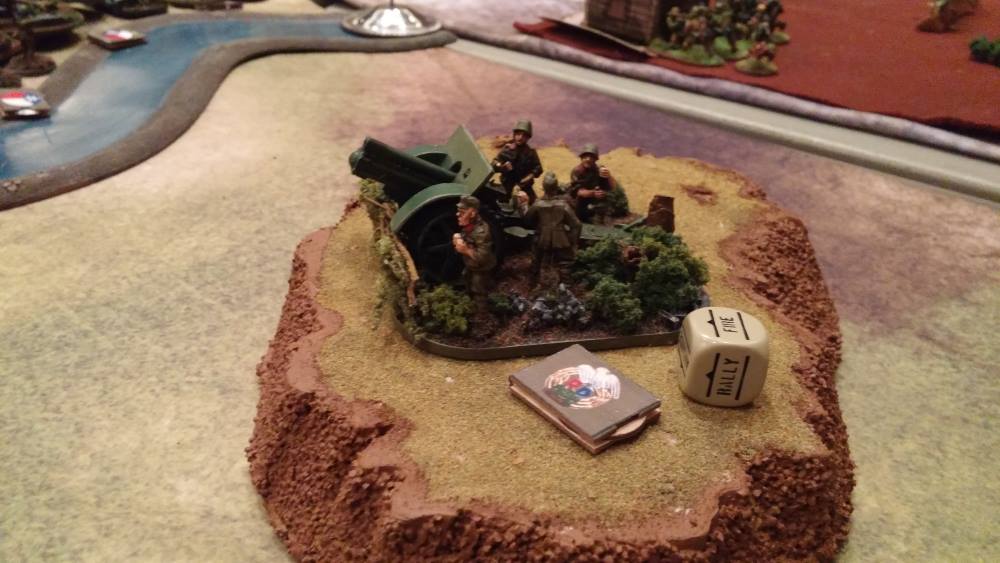
Japan
Overall Grade: A
Alex: Japan is probably my favorite faction to play in Bolt Action. They have an eclectic mix of weird and unique units, but by far their biggest selling point is their special rules. Japan gets “Death Before Dishonour” which awards EVERY Japanese unit the Fanatics special rule. Fanatics is arguably the best special rule in Bolt Action, allowing units to essentially fight to the last man rather than surrender or run away after taking too many losses. Fanatics is also great for close-combat, which synergizes well with Japan’s next special rule: “Banzai Charge”.
Banzai allows Japanese infantry to automatically make Run moves towards the nearest visible enemy unit, eliminating any need to take an order check first. This allows Japanese units to keep moving under fire, when any other army would hit the dirt and become bogged down. The result is promoting a very aggressive playstyle suited to getting in close to engage enemy units in close quarters.
The other Japanese rules allow units to start the game in Ambush and give an ability for Kempeitai officers to re-roll certain results. If I had to make one criticism of the Japanese rule, I would have replaced the Kempeitai special rule with a second rule related to Japanese defensive strategies in the second half of the war, perhaps involving infiltration – thus giving the Japanese a unique bifurcated approach that lets them switch between guile and pure offense. Grade: A
Michael O: Agreed with the above – the Japanese army just plays a ton different than any other force, and while a lot of that is based on units – a ton comes from their national rules.
Spear armed militia with Banzai are pretty nuts and were a real menace at tournaments for a while.
Ilor: To build on Alex’s comment about a bifurcated approach, one of the things we haven’t really talked about (but something I would love to see) is a menu of terrain-related special rules that you could purchase as part of force creation. For instance having a National Special Rule that gives you bonus movement in jungles really only ever comes into play if you’re on a jungle table. Because Bolt Action skews more heavily towards tournament play, this means terrain-specific special rules are far less common – as you can’t guarantee any given tournament table will have that kind of terrain. But for scenario-based play I think it would be really cool to kit out your early-war Japanese or mid-war Australians with a “Jungle Fighters” rule that lets them move more quickly through jungle terrain (or avoid other penalties that that terrain might impose). Similarly, it would be super cool if a British LRDG force had the ability to outflank on desert terrain tables.
This kind of thing doesn’t really fit neatly into “National Special Rules,” but is very much something that can make scenario-based games much more interesting and engaging, and can present players with a lot more interesting tactical choices.
Dan: Japan’s rules are well deserving of an A. They’re a ferocious army, both on the table and historically, and the rules really reflect the real world reputation that the Japanese army had. They’re fun to play as and fun to play against. Grade: A
Conclusions
Alex: Although a number of armies did get poor grades on this ranking, what is interesting to me is that they’re all from the “Armies of France and the Allies” and “Italy and the Axis” books. The armies of the major powers all did fairly well and, with a few changes, could probably be carried over into the next edition without complaint. I think the Allies and Axis books probably represent an older generation of Bolt Action supplements when these minor armies weren’t supported by a model line and were perhaps added more as a gimmick or curiosity, than as a serious attempt to make them competitive with the major factions.
Michael O: Honestly, this list is nothing without rules for Slovakia. 0/10, would not rate again.


